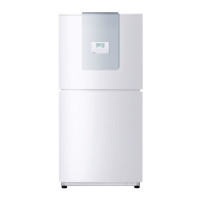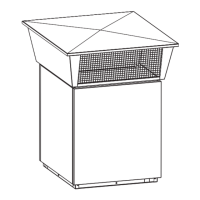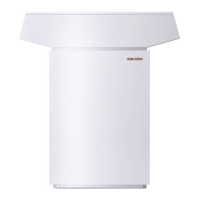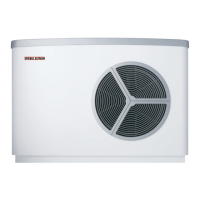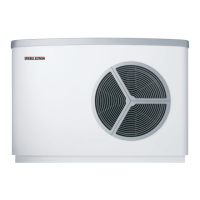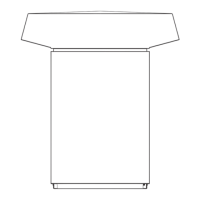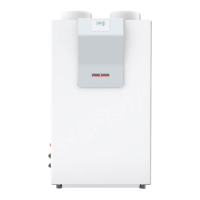12 |WPL 33 www.stiebel-eltron.com
INSTALLATION
Installation
10.3 Heating water connection
!
Material losses
The heating system to which the heat pump is connected
must be installed by a qualified contractor in accordance
with the water installation drawings that are part of the
technical guides.
Thoroughly flush the pipework before connecting the heat
pump. Foreign bodies, such as rust, sand or sealant can im-
pair the operational reliability of the heat pump.
Connect the heat pump on the heating water side. Check for
tightness.
Connect the flexible pressure hoses to the connectors.
The pressure hoses must be at least 1 metre long.
Structure-borne noise is largely prevented by the anti-vibration
construction of the heat pump and by the flexible pressure hoses,
which act as anti-vibration mounts.
Oxygen diffusion
!
Material losses
Avoid open heating systems and plastic pipes in under-
floor heating systems which are permeable to oxygen.
In underfloor heating systems with plastic pipes that are per-
meable to oxygen and in open vented heating systems, oxygen
diffusion may lead to corrosion on the steel components of the
heating system (e.g. on the indirect coil of the DHW cylinder, on
buffer cylinders, steel heating elements or steel pipes).
!
Material losses
The products of corrosion (e.g. rusty sludge) can settle in
the heating system components and can result in a lower
output or fault shutdowns due to reduced cross-sections.
10.3.1 Filling the heating system
Heating water quality
Carry out a fill water analysis before the system is filled. The fill
water analysis may be requested from the relevant water supply
utility.
!
Material losses
To avoid damage as a result of scaling, it may be neces-
sary to soften or desalinate the fill water. Always observe
the fill water limits specified in the "Specification / Data
table" chapter.
Recheck these limits 8-12weeks after commission-
ing and during the annual system service.
Note
With a conductivity >1000μS/cm, desalination treatment
is recommended in order to avoid corrosion.
Note
Suitable appliances for water softening, as well as for
filling and flushing heating systems, can be obtained via
trade suppliers.
Note
If you treat the fill water with inhibitors or additives, the
same limits as for desalination apply.
Venting the heating system
Vent the pipework carefully. For this, also activate the air
vent valve integrated into the heating flow inside the heat
pump.
10.4 Heat meter
!
Material losses
When installing a heat meter, note that most heat me-
ters cause a substantial pressure drop, and therefore you
should select a larger circulation pump.
10.5 Safety temperature controller for underfloor
heating system
!
Material losses
In case of failure, in order to prevent an excessively high
flow temperature in the underfloor heating system, we
generally recommend the use of a safety temperature
controller to limit the system temperature.
10.6 Flow rate on the heating side
10.6.1 Minimum flow rate for operation without a buffer
cylinder
The appliance is designed in such a way that no buffer cylinder
is required to provide hydraulic separation of the flow in the heat
pump circuit and the heating circuit in conjunction with area heat-
ing systems.
In an installation with several heating circuits, we recommend
using a low loss header.
The minimum flow rate is set via the temperature differential of
the heating system.
Set the heating circuit pump so that the value is equal to or lower
than the maximum temperature differential.
The setting is made in heat pump operation alone. For this, the
following settings must be made first:
Temporarily remove the fuse from the electric emergency/
booster heater to isolate it from the power supply. Alterna-
tively, switch OFF the second heat generator.
Operate the heat pump in heating mode.
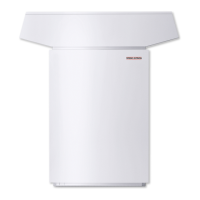
